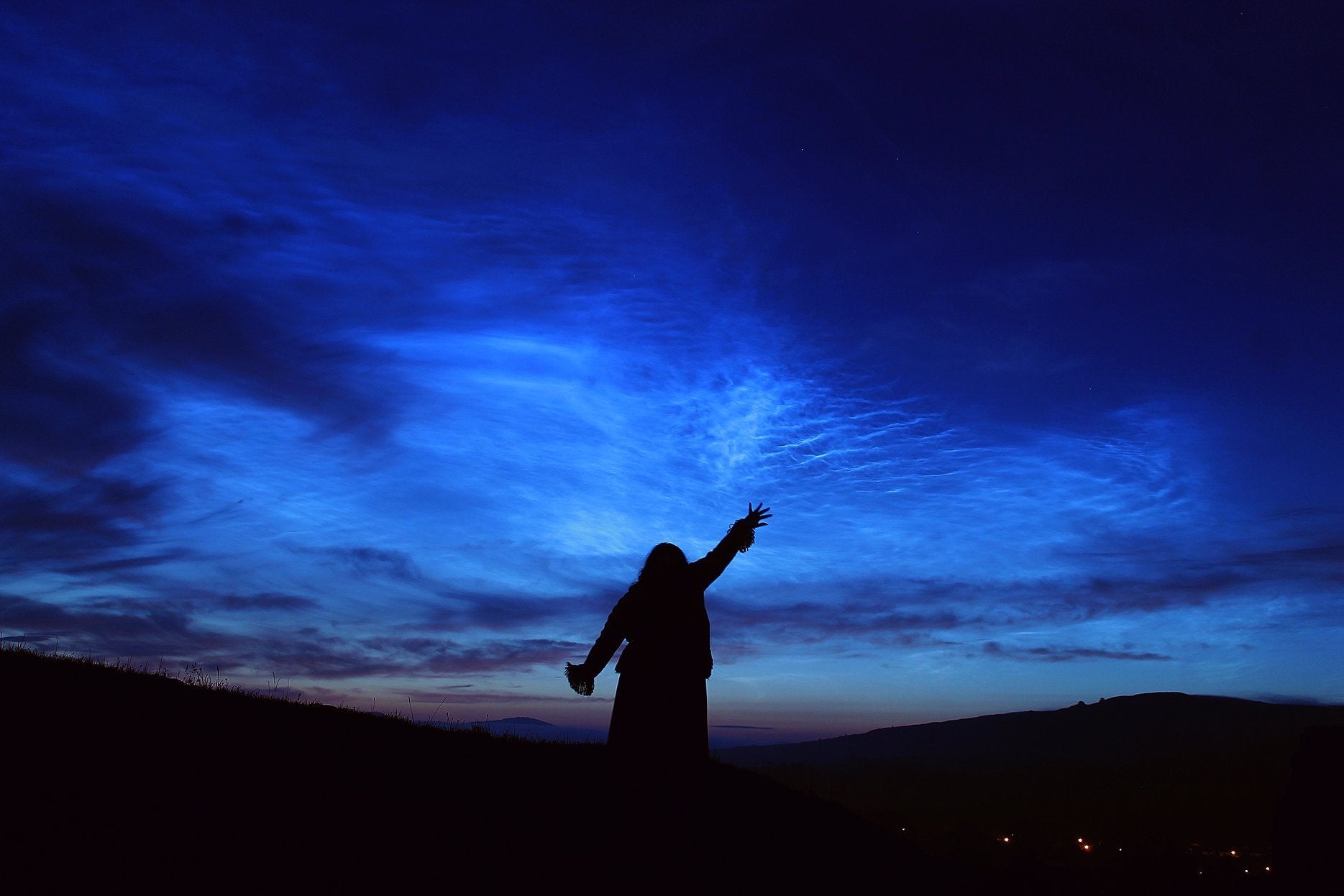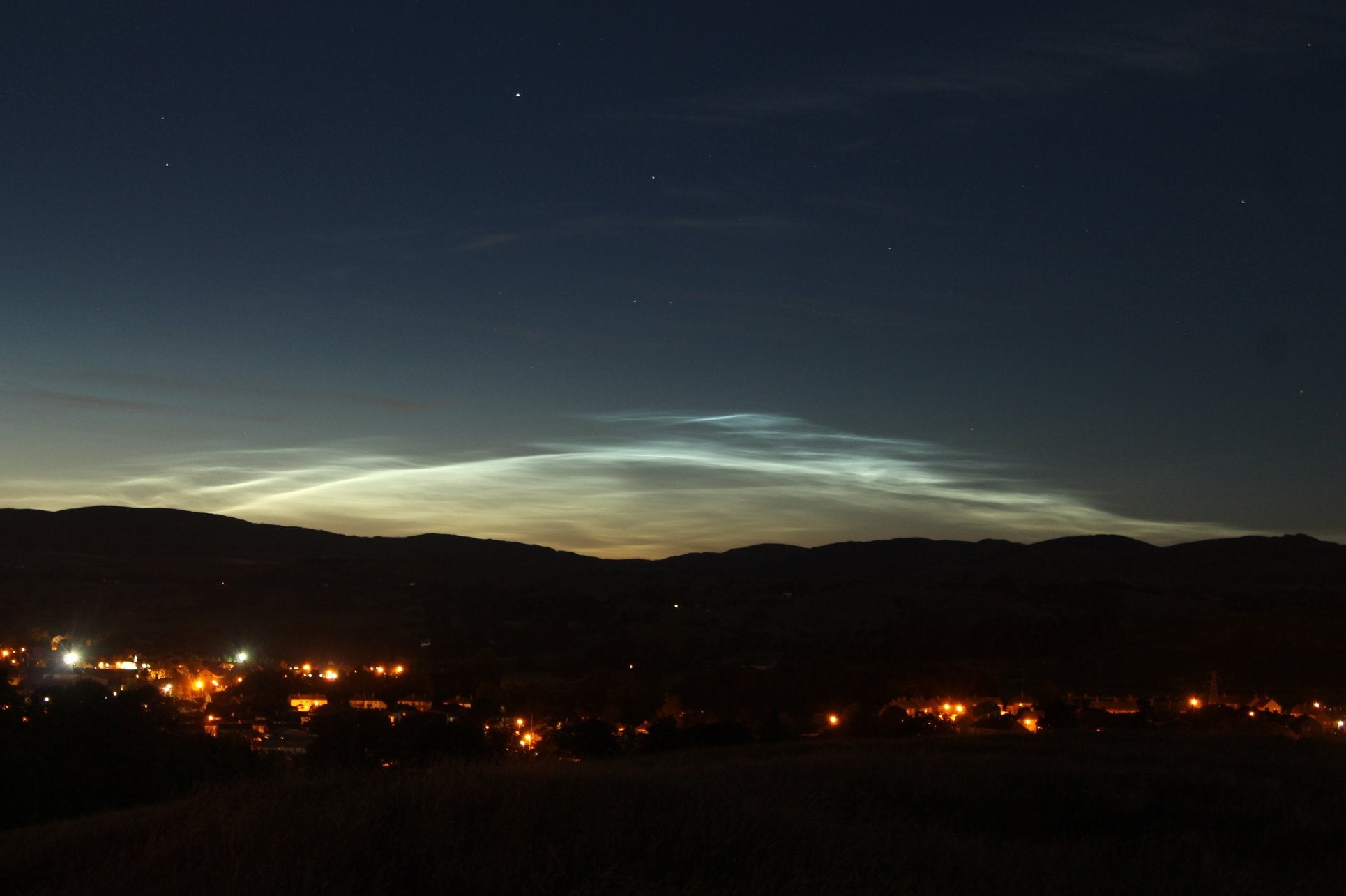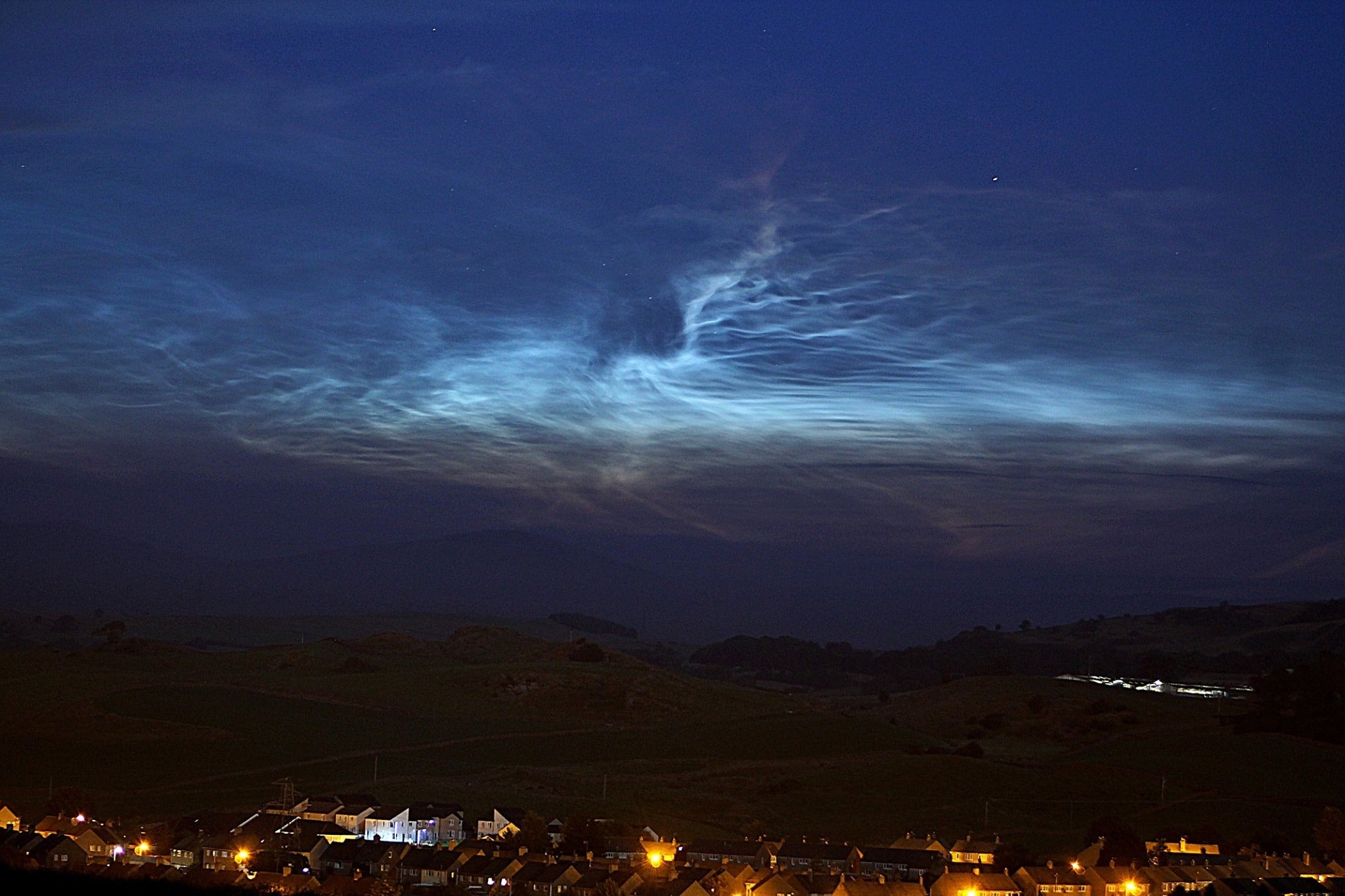
Summer is a time when many weary and sleep-deprived amateur astronomers and skywatchers put their binoculars and telescopes into hibernation. Depending on your location, the night sky may not get dark enough for long enough to truly see faint stars and deep-sky objects during the summer months, and the planets all seem to be low in the sky, too. But don’t throw that tarp over your Dob or SeeStar just yet! There’s something beautiful we can only see up there on the long, balmy nights of summer: noctilucent clouds, or NLC.
Normally clouds are the astronomer’s archenemy, but these clouds are different. They aren’t bloated bags of water droplets — they’re thin, wispy webs of ice-crusted dust that form way, way up in the atmosphere, much higher than those “normal” clouds. This means that NLC are illuminated by the Sun’s rays in the middle of the night and glow in the sky long after sunset — hence, “nocti” meaning night and “lucent” meaning glowing.
NLC are only seen in summer because that’s when conditions in the upper atmosphere are just right for them to form. Every spring, NLC watchers look forward to the end of May, because that’s when the “NLC season” begins. Note, though, that sometimes activity starts before then, and sometimes it’s delayed into the middle of June. It all depends on what’s happening up there on the edge of space.
Most NLC displays are modest affairs and only look like faint bands or patches of glowing cloud hovering above the northern horizon for a few hours late on a summer night. But sometimes modest turns into magnificent, and if you’re lucky enough to catch a major display of NLC this summer you’ll have to pinch yourself to prove you’re not dreaming, because they can almost rival the northern lights for beauty.
How to spot noctilucent clouds
So, how do you see NLC?
The good news is you don’t need to seek out a dark-sky site to see and photograph NLC; they can be bright enough to be seen from the middle of even badly light-polluted towns and cities. More good news: You don’t need any special equipment either. NLC displays are clearly visible to just the naked eye.
Having said that, a good pair of binoculars is great to have to hand during a display of NLC because they often have very fine, intricate structures, such as beautiful wisps, curls, streamers, and billows, that can’t really seen with just the naked eye.
But the bottom line is this: to see NLC all you need are your eyes and a clear night.

I’ve always thought that the best NLC observers are insomniacs, burglars and vampires, because if you want to see NLC you need to be prepared to stay up late and/or get up early too. Occasionally a big display of NLC will already be in progress immediately after sunset, looking like ragged, feathery wisps of electric blue to the north as twilight deepens, but this is rare. Usually nothing happens until around 11:30 P.M., when the first signs of NLC appear just above the northern horizon.
Like the aurora, most displays of NLC start very modestly. Just above the north or northeastern horizon, you’ll see what look like golden threads or silvery vapor trails. If you spot those peeking up from behind the horizon around midnight, it’s a good sign — but it’s not a guarantee that something amazing is brewing. There’s always a chance those threads and trails might fall out of sight again, or simply drift apart. That happens.
But if you’re lucky then the display not only persists but grows larger and brighter as darkness deepens. The NLC spread out along the northern horizon and stretch up from it, too, like a dragon unfurling its wings. As the sky grows darker and darker the NLC will grow brighter and brighter, throwing a glowing veil across the northern sky that shines with a beautiful mother-of-pearl luminescence totally unlike anything else you will ever see in the sky.
Then what? Well, you get comfortable, stay out as long as you can, and enjoy the show, however it develops. During a good display of NLC, as the winds in the upper atmosphere catch the clouds they form ghostly curls, ribbons, and tendrils of silvery-blue light that look like an energy field special effect from a science-fiction film. If you look at these large-scale features through binoculars you’ll see the clouds changing shape in slow motion as they are sculpted by the silent winds swirling high above Earth. You’ll also see smaller, subtler features embedded within them. The most obvious is a distinctive and unique crosshatch pattern, but you’ll also see clumps and knots of brighter material shining within the clouds too.
Most displays of NLC peter out in the small hours of the morning, fleeing the sky long before dawn and allowing you to grab a few hours of sleep before you have to get up again for work. But sometimes an NLC display will brew up and grow bigger and brighter until it’s covering half the sky and just stay there all night. All you can do then is sit there bathed in its eerie light, shaking your head in disbelief as nature paints the heavens a dozen different shades of silvery blue and violet.

Photographing NLC
NLC are amazing to watch, but they’re also rewarding and surprisingly easy to photograph. If your phone has a camera good enough to allow you to photograph sunsets and landscapes well it will also let you photograph big displays of NLC. Just set it to Night Mode so it’s taking a long exposure in low light and click away. With your phone held as steadily as possible, you’ll get something.
If you want clearer, more detailed images of NLC then you’ll need either a digital bridge or DSLR camera. Don’t worry about settings too much at first, just set your camera on Auto, focus it on a light on the skyline, and start taking photos. You’ll eventually get something you like.
But with a little more work and preparation you can get quite beautiful images. With your camera and a 50mm or wide-angle lens fixed securely to a steadying tripod, set it to Manual, set the ISO to 800 or so, set the exposure length to several seconds, and then take a photo. You should record the display’s structure pretty well. If you swap your standard or wide-angle lens for a zoom or telephoto lens, you can take closeups of individual whirls, curls, and whorls. By experimenting with different ISO and exposure settings you’ll end the night with photos you can be proud of.
When to look for NLC
Now you know what to expect, when will you be able to see these amazing glowing clouds for yourself? After all, you don’t want to wake up one morning and read that the sky was painted with a magnificent display of NLC the night before, while you were tucked up in bed!
Unfortunately, unlike auroral displays NLC can’t be predicted in advance. But you can definitely improve your chances of seeing them by using social media — there are many NLC-watching groups and pages on Facebook that give members heads-up warnings when a display is happening. And Twitter/X’s astro accounts light up whenever a big display of NLC is happening too.
Some skywatchers don’t consider NLC anything to do with astronomy. But on the long, star-starved nights of summer, why wouldn’t you want to stand outside under a sky painted electric blue?
Good luck!









